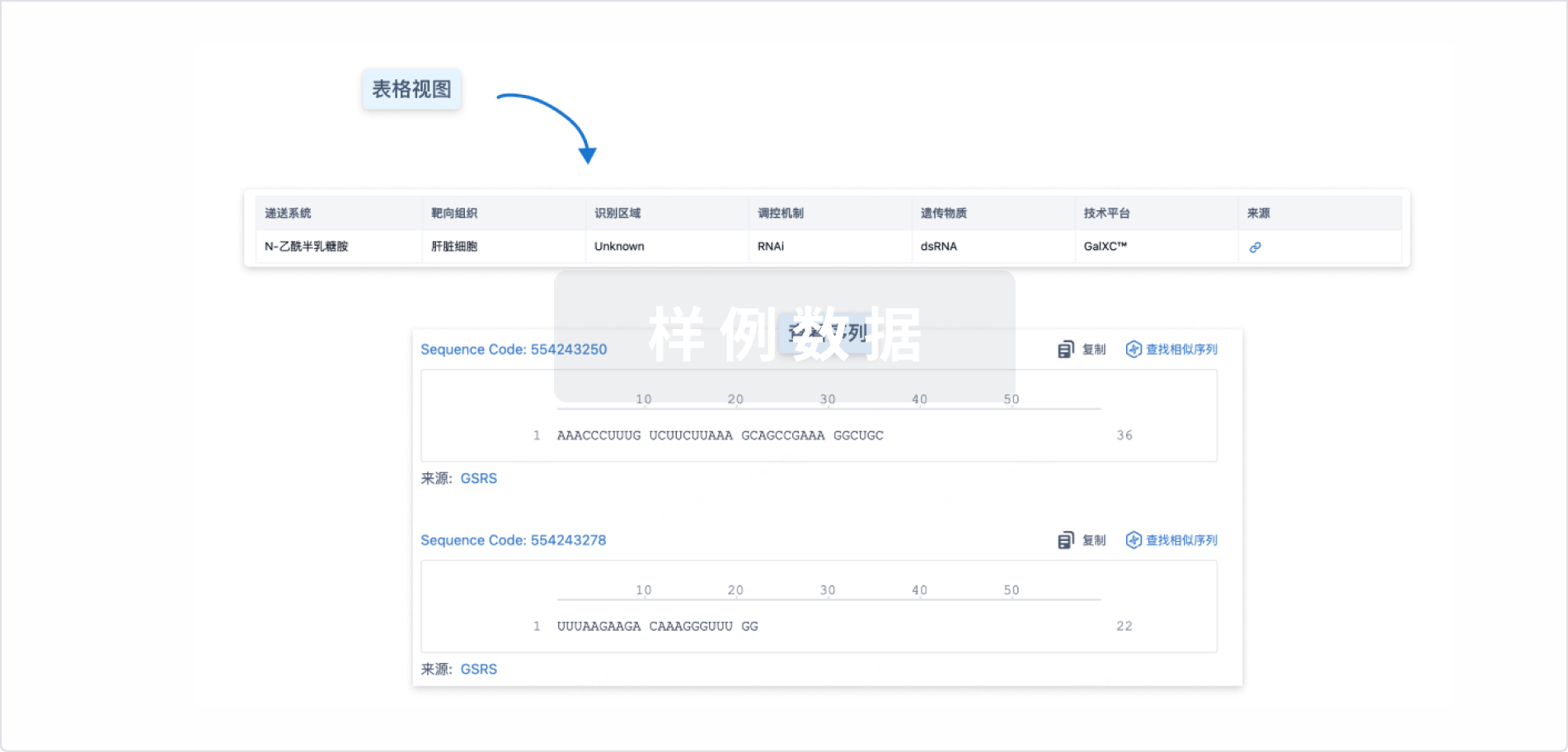预约演示
更新于:2025-05-07
aptCTLA-4
更新于:2025-05-07
概要
基本信息
结构/序列
使用我们的RNA技术数据为新药研发加速。
登录
或

关联
1
项与 aptCTLA-4 相关的临床试验EUCTR2019-002767-98-IE
A Pilot Study of Combined Immune Checkpoint Inhibition in combination with ablative therapies in Subjects with Hepatocellular Carcinoma (HCC) - HCC-TACE study
开始日期2020-05-28 |
申办/合作机构 |
100 项与 aptCTLA-4 相关的临床结果
登录后查看更多信息
100 项与 aptCTLA-4 相关的转化医学
登录后查看更多信息
100 项与 aptCTLA-4 相关的专利(医药)
登录后查看更多信息
24
项与 aptCTLA-4 相关的文献(医药)2024-12-05·Neuro-Oncology
Intracranial administration of anti-PD-1 and anti-CTLA-4 immune checkpoint-blocking monoclonal antibodies in patients with recurrent high-grade glioma
Article
作者: Lebrun, Laetitia ; Stevens, Latoya ; Salmon, Isabelle ; Vaeyens, Freya ; Vanbinst, Anne-Marie ; Everaert, Hendrik ; Neyns, Bart ; Geeraerts, Xenia ; Tuyaerts, Sandra ; Caljon, Ben ; Dirven, Iris ; Del’haye, Jacomi ; Geens, Wietse ; Bruneau, Michaël ; Duerinck, Johnny ; Kockx, Marc ; Lescrauwaet, Louise ; Brock, Stefanie
2024-11-01·Immunity
T lymphocyte recruitment to melanoma brain tumors depends on distinct venous vessels
Article
作者: Mayer, Chanté D ; Wick, Wolfgang ; Thommek, Calvin ; Berghoff, Anna S. ; Schadendorf, Dirk ; Messmer, Julia M. ; Effern, Maike ; Messmer, Julia M ; Venkataramani, Varun ; Karreman, Matthia A ; Westphal, Dana ; Helfrich, Iris ; Schubert, Marc ; Winkler, Frank ; Wehner, Rebekka ; Hölzel, Michael ; Piechutta, Manuel ; Berghoff, Anna S ; Hinze, Daniel ; Karreman, Matthia A. ; Mayer, Chanté D.
2023-05-03·Cells
A Mathematical Model for Predicting Patient Responses to Combined Radiotherapy with CTLA-4 Immune Checkpoint Inhibitors
Article
作者: Sung, Wonmo ; Suh, Tae Suk ; Choe, Bo-Young ; Kim, Yongjin
100 项与 aptCTLA-4 相关的药物交易
登录后查看更多信息
研发状态
10 条进展最快的记录, 后查看更多信息
登录
| 适应症 | 最高研发状态 | 国家/地区 | 公司 | 日期 |
|---|---|---|---|---|
| 肿瘤 | 临床前 | 中国台湾 | - |
登录后查看更多信息
临床结果
临床结果
适应症
分期
评价
查看全部结果
| 研究 | 分期 | 人群特征 | 评价人数 | 分组 | 结果 | 评价 | 发布日期 |
|---|
No Data | |||||||
登录后查看更多信息
转化医学
使用我们的转化医学数据加速您的研究。
登录
或

药物交易
使用我们的药物交易数据加速您的研究。
登录
或

核心专利
使用我们的核心专利数据促进您的研究。
登录
或

临床分析
紧跟全球注册中心的最新临床试验。
登录
或

批准
利用最新的监管批准信息加速您的研究。
登录
或

特殊审评
只需点击几下即可了解关键药物信息。
登录
或

Eureka LS:
全新生物医药AI Agent 覆盖科研全链路,让突破性发现快人一步
立即开始免费试用!
智慧芽新药情报库是智慧芽专为生命科学人士构建的基于AI的创新药情报平台,助您全方位提升您的研发与决策效率。
立即开始数据试用!
智慧芽新药库数据也通过智慧芽数据服务平台,以API或者数据包形式对外开放,助您更加充分利用智慧芽新药情报信息。
生物序列数据库
生物药研发创新
免费使用
化学结构数据库
小分子化药研发创新
免费使用

